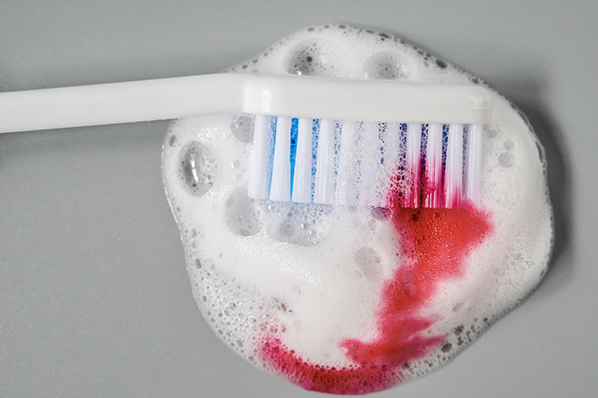 Everyone knows that you should be brushing your teeth after every meal and floss at least once a day. There should also be two trips to the dentist for a cleaning and exam every year. The vast majority of us follow those recommendations but what happens when some of those items are “skipped.” A good indication that there are problems with your mouth is when your gums bleed after brushing or flossing. This is not something that should be ignored and here’s why:
Everyone knows that you should be brushing your teeth after every meal and floss at least once a day. There should also be two trips to the dentist for a cleaning and exam every year. The vast majority of us follow those recommendations but what happens when some of those items are “skipped.” A good indication that there are problems with your mouth is when your gums bleed after brushing or flossing. This is not something that should be ignored and here’s why:
Possible Infection
The gum disease is the root cause of up to 80% of lost teeth and those bleeding gums are the first sign of that disease. When gums bleed it means there is gingivitis or a gum infection. If left untreated, then the gingivitis can spread to the bone that surrounds the tooth. That is called periodontitis and is much costlier to treat. It can lead to the teeth loosening and eventually falling out. Nobody wants that!
Smokers are at a higher risk of periodontal disease because of how thee blood vessels around the gums are constricted because of the smoking.
Other Reasons
There are other reasons that gums can bleed. These include the following:
. Hormonal changes during pregnancy and adolescence
· Side effects from medication
· Malnutrition
· Ulcers
· Dental Abscess
· Oral Cancers
Clearly, this isn’t an issue that should be ignored.
Best Approach For Treating Bleeding Gums
Preventing gingivitis goes back to the basics: brushing twice a day and flossing. You can boost your oral hygiene routine by adding an antiseptic mouthwash like Listerine. Of course, nothing beats getting input from your dentist. They’ll be able to assess the situation and make the right recommendations for proper care. Have you been to the dentist lately?







